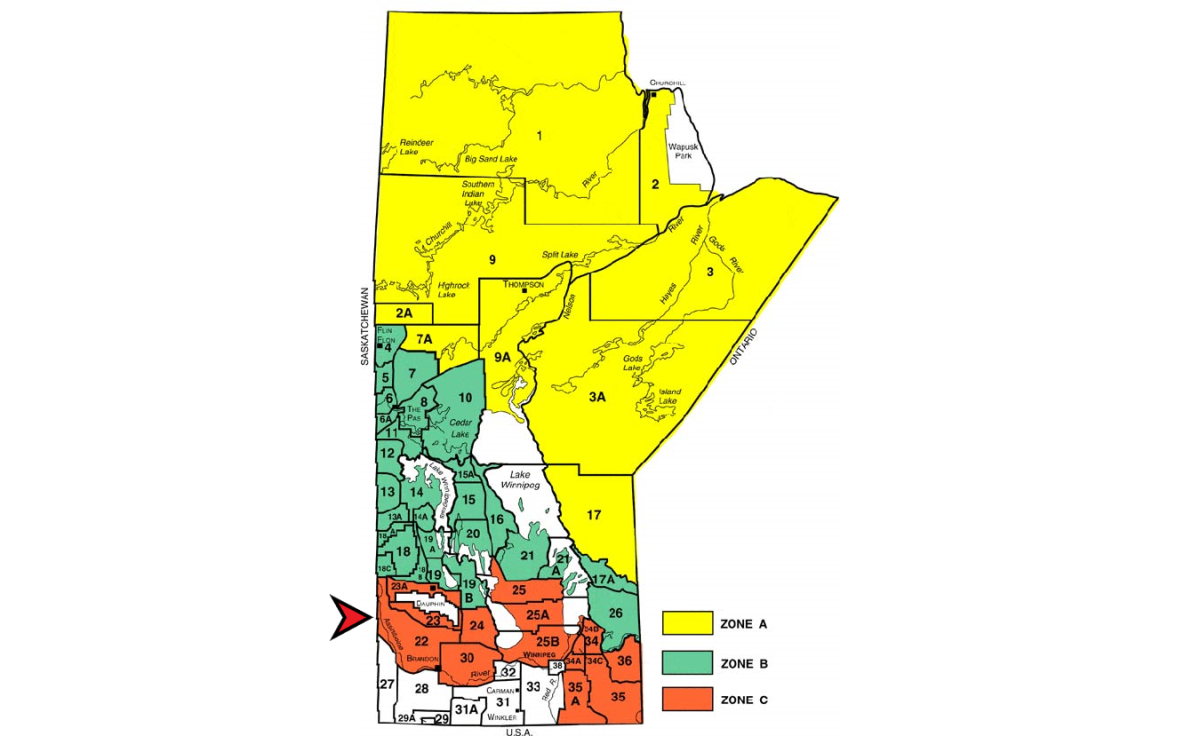An incurable wildlife malady named Chronic Wasting Disease (CWD) has been found in Manitoba — and even though it has no known effects on humans, it could wreak havoc on the province’s deer population.

The province first advised Manitobans the disease had made its way over the border with Saskatchewan on Monday.
They say in mid-October, officers in the area near Lake of the Prairies found an unhealthy male dear and euthanized it.
Subsequent testing found the animal to have the province’s first-ever known case of CWD.
Dr. Sabine Gilch, a Canada Research Chair in Prion Disease Research at the University of Calgary, says it’s a slow-moving, completely fatal infectious neurodegenerative disease that affects deer, elk, moose and reindeer.
“Unlike viruses or bacteria, prions don’t have genetic material like DNA. They consist only of a protein and this makes them very sturdy to decontamination methods.”
“The prions destroy the brain — but this process takes quite a while.”
Gilch says it could be years, or perhaps even decades before an infected animal starts to show clinical signs of the disease.
“Once the signs start, the animals will die very quickly — within several months or so.”

The problem with CWD, according to Gilch, is that it can be transferred between animals because it’s shed in feces, urine and saliva.
“This means prions get into the environment — they bind to soil, contaminate the environment – (which) further facilitates the transmission to other (animals).”
“(Prions) are very stable pathogens, so they can persist in the environment for many, many years and still be infectious.”
If a deer on a farm was to be infected, Gilch says the entire herd would have to be killed off. And even years later, after healthy animals were brought in, the new herd could still get infected with the CWD agents still persisting in the soil.
Gilch says that means this first case likely isn’t an isolated one.
“This animal already showed clinical signs, which means it was at a very progressed state with the disease,” Gilch explains. “This means it’s very likely there are more animals (in Manitoba) that are infected.”
Once Manitoba conservation officers found the disease, the province moved swiftly to propose a ban on hunting deer, moose, caribou and elk in the region.
“Right now the focus is on informing hunters and harvesters,” a provincial spokesperson told Global News.
“There’s a lot of work to do, and enforcement may be part of that but we’re counting on hunters to understand the reason for this, and the significant risks if the ban is ignored.”
The spokesperson also confirmed there would be no exemption for Indigenous people, something other hunting bans often include.

For Russell-based hunting group Big Grass Outfitters, it’s frustrating news.
“A lot of the residents — and anyone that comes into the area — are going to be frustrated because they can’t hunt,” partner Judy Usunier explains.
Dr. Gilch doesn’t understand the logic behind the move, either.
“My colleagues and I were quite surprised. In Alberta, we are doing the opposite — increasing the hunting to reduce the deer populations, which in the end reduces the spread.”
The province is also advising area hunters to have their harvested animal tested for the disease, practice safe carcass handling, and to not consume meat from any animal that returns a positive result.
The disease has shown to have no known effects on humans, but Gilch says it could take decades more until we know the full story.
Since initially being found in a Colorado deer in the 1960s, Gilch says CWD has moved on to 26 U.S. states, and now four Canadian provinces — including Alberta, Saskatchewan and Quebec.
She says the slow speed with which it spreads gives researchers like her pause.
“Considering how long prion diseases to show up in their hosts … it might still be too early to make the conclusion that it’s been transmitted to humans.”

“At the moment, there’s no indication that hunters or people who consume venison have increased occurrences of human prion disease.”
However, models suggest it is theoretically possible the animal-to-human transfer could happen with CWD.
Manitoba’s livestock industry looks to be unaffected at this stage as well.
The province says ongoing CWD surveillance already existed at elk farms, and no cases in farmed animals have been detected.
CWD can’t infect cattle or other domesticated animals, but the province does say it’s something to surely be aware of.
“The province will need the full cooperation of the public, including hunters, producers and land-owners to ensure this disease is contained or even eradicated from the area.”













Comments